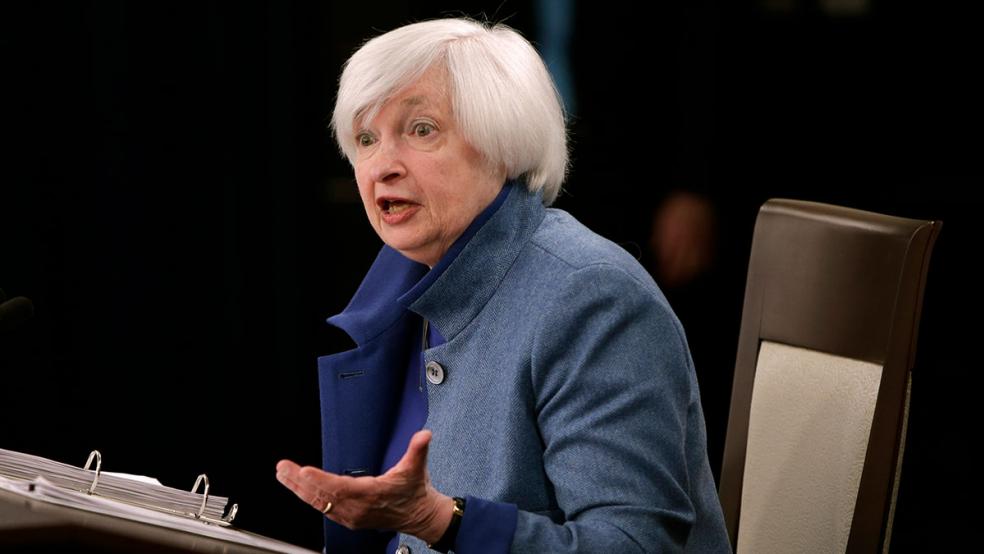For many years, Republicans argued that tax cuts for the wealthy pay for themselves. Cutting taxes on the wealthy, according to Republicans, allows them to keep a larger share of anything new they create and this leads to new economic activity and new innovation – so much that the resulting increase in economic growth and tax revenue fully offsets the budgetary effects of the tax cuts. Everyone is better off as income “trickled down” from the top.
What actually happened is that the tax cuts had very little, if any, impact on economic growth. Deficits went up, and somehow income never trickled down – if anything, it trickled up. Today, Republicans are less likely to argue that tax cuts pay for themselves, though you still hear it, but they still insist tax cuts for the wealthy magically increase economic growth and offset much of the revenue loss.
Related: It’s a Ruse: Tax Cuts Can’t be Financed by Reducing Government Waste
But even in the very unlikely case that Trump’s proposed tax cuts are successful (beyond increasing the income of the wealthy which many argue is the true goal), the economic growth rates Trump has promised are unlikely to be attained. In fact, if the economy is near full employment as it is now, output growth is unlikely to go up at all except briefly. To see why, it’s important to consider how the Federal Reserve will react to upward pressure on output.
When the Fed sets interest rates, it reacts to the “output gap,” the difference between actual output and something known as the natural rate of output. The Fed also reacts to inflation, but for the moment let’s focus on the output gap.
The natural rate of output is the rate of economic activity that keeps labor and all other inputs to production fully employed and is sustainable in the long-run. When the economy begins to push above the natural rate, the Fed worries that inflation will rise above its target level of 2 percent. To guard against this, the Fed increases interest rates to slow economic activity and reduce the inflationary pressure, and it will keep raising interest rates until output stabilizes at the natural rate. No matter how much Trump tries to increase economic growth, the Fed will not let output rise above the natural rate, at least not for very long.
Related: The Big Risk in Trump's Plan to Cuts Taxes and Boost Spending
But if the natural rate of output is consistent with full employment – if labor and other resources are fully employed – how can output go above that level? The key is the word sustainable in the definition of the natural rate of output. Think of it this way. Over the course of a semester in college, there is only so much studying that can be done day-to-day and week-to-week – there is a maximum sustainable level of effort. But when exams approach, it’s possible to work for, say, 20 hours or more to get ready. The students’ output rises above the natural rate in the short-run, but it will fall back to the natural level over time.
The same is true for labor and capital. For awhile, when demand is high (due hypothetically to tax cuts, but this can happen for other reasons as well), labor can be pushed beyond 40 hours per week. A trucking fleet can pull trucks out of maintenance and put them on the road to meet the increased demand. The factory floor can be run full-time instead of stopping at intervals for the maintenance it needs. But to do this, workers must be paid overtime. Trucks and factories that do not get the maintenance they require will be more costly down the road, all of which force the firm to raise prices to cover the higher costs. That is, inflation will begin to go up.
The alternative to pushing labor and capital beyond their sustainable levels of use is to hire more workers, purchase more trucks, or build new factory capacity. But since the economy is already at full employment, labor, capital, and the resources needed to expand capacity must be bid away from other firms. The firm must be willing to pay more than other firms that are also attempting to expand and meet the increase in aggregate demand. Bidding labor, capital, and other inputs to production away from other firms raises costs and hence prices too, and would also be inflationary.
Related: US Debt Is Going to Soar Over the Next 30 Years: CBO Report
The only way for the increase in demand to be non-inflationary is for the natural rate of output to increase as a result of the tax cuts, that is, for aggregate supply to go up and match the increase in demand. But that is the essence of supply side economics, to increase our productive capacity, and we know how well that has worked out in the past. Somehow, however, it doesn’t stop Republicans from continuing to make supply side arguments to justify the tax cuts for the wealthy.
There may be a way for tax cuts to increase our productive capacity, but they would need to be very different from the tax cuts that have been proposed by the Trump administration. For example, well-targeted and well-constructed investment tax credits can enhance our ability to produce goods and services.
Trump has promised to increase economic growth substantially, but it’s unlikely he will succeed based upon evidence of similar tax cuts in the past. Even in the unlikely event he does succeed in stimulating demand, the Fed will not let economic growth reach the levels he has promised. Wonder who he’ll blame for his failure?






